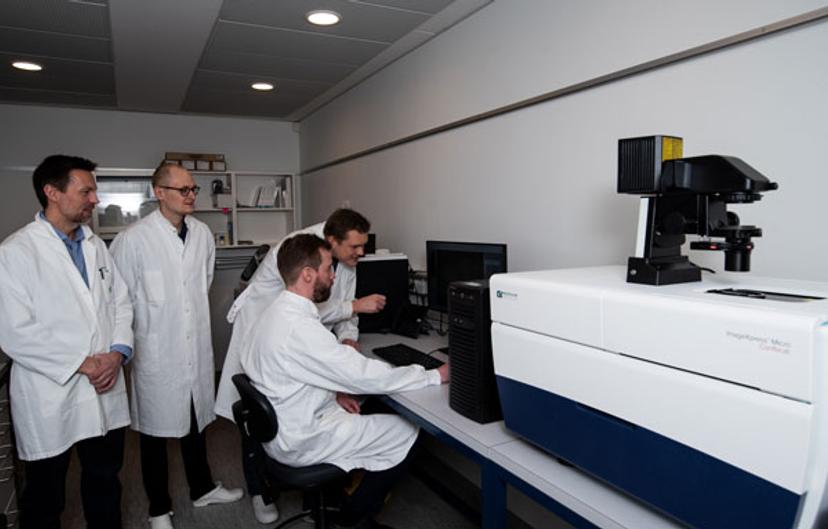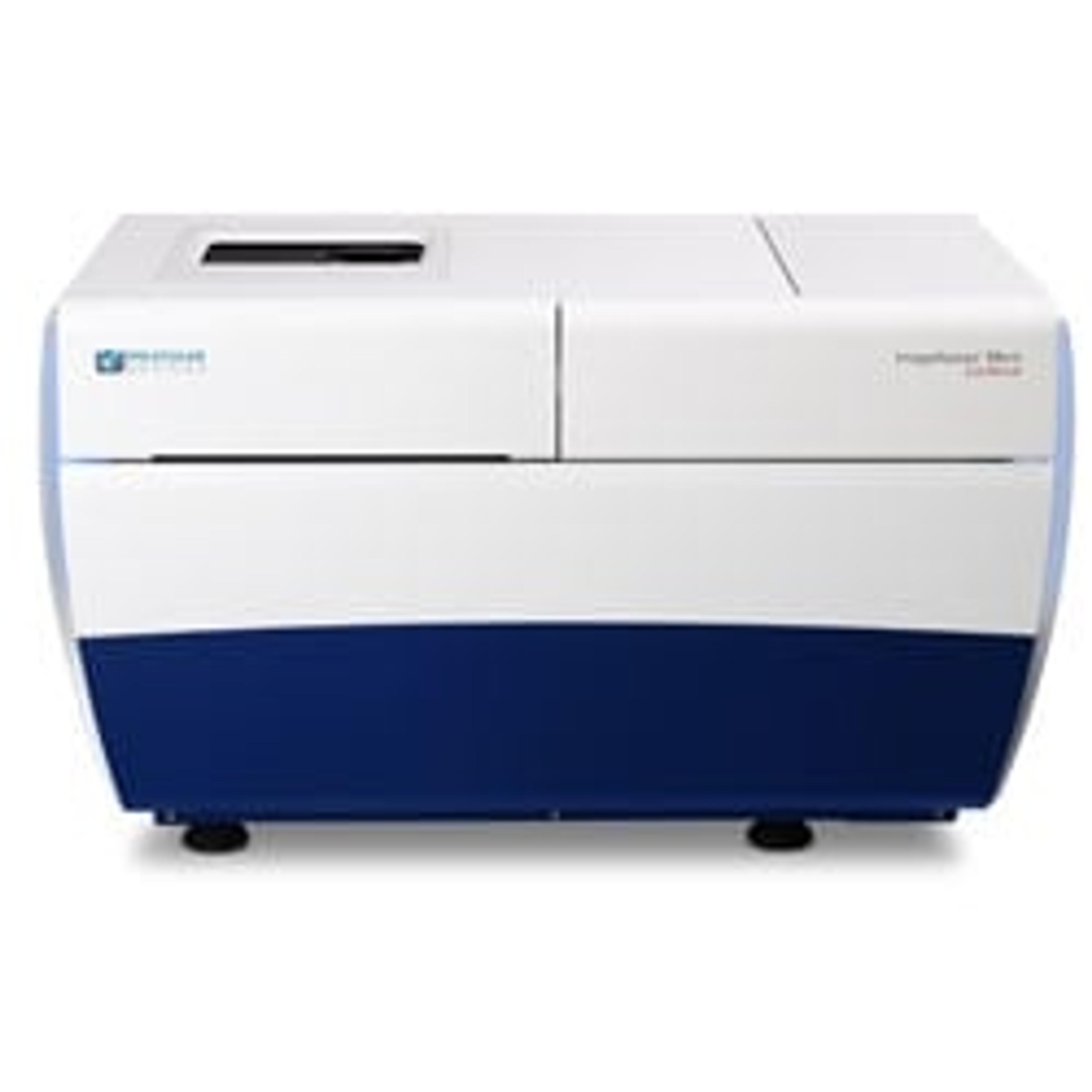Revolutionizing early drug discovery for immuno-oncology and neurodegenerative disease modeling: High-throughput imaging of 3D models of disease
How Bioneer A/S is using state-of-the-art imaging technology to advance screening of 3D cancer spheroids and monitor neurite outgrowth
23 Mar 2020
The development of 3D cellular models of disease has enabled researchers to better recapitulate in vivo cell environments. As 3D models become more prevalent in the drug discovery industry, there is now increasing focus on maximizing the analysis of these models to better identify potential candidate molecules that can be progressed, as well as quickly identifying those that should not. In this SelectScience article, we speak with Christian Clausen, Director of Research and Development at research-based service provider Bioneer A/S, to learn about the approach the company is taking to provide 3D, high-throughput setups for biotech and pharmaceutical companies working across a number of projects, and how this technology will help immuno-oncology and neurodegenerative diseases studies in particular.
Please tell us about Bioneer A/S and the overall mission of your company
Bioneer A/S is a Danish research-based service provider, offering advanced cellular assays, molecular histology techniques and biomarker discovery, protein production and drug development services. Bioneer, originally established in 1982, is headquartered north of Copenhagen and has another two sites in Copenhagen and Lund, Sweden. Our mission is to increase the competitiveness of our global customers by facilitating their early, explorative development of new therapeutic solutions.
We have state-of-the-art laboratory facilities and scientifically trained employees that strive to solve R&D projects from the very simple ones to highly complex projects, involving multiple disciplines across our organization. One brilliant example is 3D disease models, where a multi-disciplinary approach is required to provide customers with data from a complicated, more in vivo-like setting.
In recent years, it has become more and more clear that moving these models and technologies into a combination of 3D and high-throughput setups would give a range of new ways to solve early drug discovery projects for our customers.
Christian Clausen Bioneer A/S
Why have you chosen to move into high-throughput and 3D imaging?
Bioneer has been developing cell models and cellular assays for companies for many years with accumulating proficiency. We have especially been focused on immune models, cancer models, neurodegenerative models and a range of barrier models (e.g., blood-brain barrier and intestinal models) as well as quantitative imaging. In recent years, it has become more and more clear that moving these models and technologies into a combination of 3D and high-throughput setups would give a range of new ways to solve early drug discovery projects for our customers. Four years ago, Bioneer initiated internal development programs to move our in-house models and cellular assays into 3D formats, in semi-high-throughput configurations for proof-of-concept studies. These efforts have been very successful, and we are now at a stage where implementing some of the models into high-throughput 3D imaging platforms is the next step.
What does this mean for your work on immuno-oncology and neurite outgrowth models?
Within immuno-oncology research, we see an increasing demand and interest for models that are not just single-layered cells (2D), but where the cells have had the possibility to form structures that more closely resemble the tumor microenvironment seen in vivo. This also includes self-organization with other cell types like stroma cells. The cutting edge of the immuno-oncology field is to study the function of the immune cells and their ability to recognize and kill cancer cells. Since Bioneer has vast experience working with immune cells and has previously established several human immune models from primary blood cells, we are now working on establishing 3D cancer spheroid models, where we combine our oncology competences with our immune modeling platform. Using this model, we will be able to analyze the infiltration of immune cells (T cells) into different tumors. Thanks to the implementation of the high-throughput ImageXpress Micro Confocal High-Content Imaging platform from Molecular Devices, we aim at establishing assays for screening various small molecules and checkpoint inhibitors for their effects on the 3D immune-cancer spheroids.

Another important focus area at Bioneer is the in vitro modeling of neurodegenerative diseases. Using human induced pluripotent stem (iPS) cells we have built models for several neurodegenerative diseases like Alzheimer’s disease, Parkinson’s disease and Frontotemporal dementia. We are already well on our way to developing different assays reflecting disease-specific phenotypes in these models. Such phenotypic assays could, for example, be characterization of protein aggregates, mis-localization of proteins, autophagy, mitophagy and neurite outgrowth. As a proof-of-principle system for neurite outgrowth, we have developed an iPS cell line where we can induce expression of the NGN2 protein, which leads to accelerated differentiation of the cells to neurons with neurite outgrowth already occurring after 2-3 days. The next step is to implement this system on the ImageXpress Micro Confocal platform and monitor neurite outgrowth in more advanced setups.
Why did you choose Molecular Devices as a partner, and why the ImageXpress Micro Confocal in particular?
It is not only important to have the best cellular models for Bioneer, but also to have state-of-the-art imaging and analysis equipment in order to offer high-qualitative research support to our customers. We believe that the features of the ImageXpress Micro Confocal system fit Bioneer’s needs and will further potentiate our ability to assist small to midsize biotech companies without knowhow and/or equipment to do these analyses in-house, as well as large pharma companies who either need help with implementing the technology in-house or are looking for an external partner to handle these analyses in the drug discovery process.

“It is not only important to have the best cellular models for Bioneer, but also to have state-of-the-art imaging and analysis equipment in order to offer high-qualitative research support to our customers. We believe that the features of the ImageXpress Micro Confocal system fit Bioneer’s needs…”.
Christian Clausen Bioneer A/S
What impact will this work have on drug discovery?
Drug discovery relies mainly on high-throughput assays with a relevant window for measuring the effects of candidate drugs. 3D cell models, in general, are expected to revolutionize the output from early drug discovery, potentially resulting in a more qualified early selection of lead candidates and, subsequently, improved R&D productivity. Bioneer has an optimal standpoint in this field, in terms of competencies and technologies, and will be able to significantly impact early drug discovery approaches in both biotech and large pharma companies. Especially within immuno-oncology and neurodegenerative disease modeling, Bioneer will be an optimal partner to work with.
What will you be working on next?
We will mainly be focusing on two set-ups; one being the continued analysis of our immuno-oncology models to elucidate the factors affecting immune cell infiltration in cancer spheroids, the other being visualization of phenotypic traits in different neurodegenerative models.
Briefly described, we will investigate infiltration of both T cells as well as NK cells in more detail by 3D imaging assays in our immuno-oncology models. We will also analyze the mode-of-action of immune cells to kill or migrate into the cancer spheroids, as well as the influence of different candidate immuno-oncology drugs.
When it comes to neurodegenerative diseases, we will use the well-described phenotypes – like altered function of the lysosomes and cellular autophagy – to set up high-throughput 3D imaging assays using the ImageXpress Micro Confocal to analyze pharmaceutical compounds affecting these processes.
You can find out more about the ImageXpress Micro Confocal High-Content Imaging System, as used by Bioneer, here.

